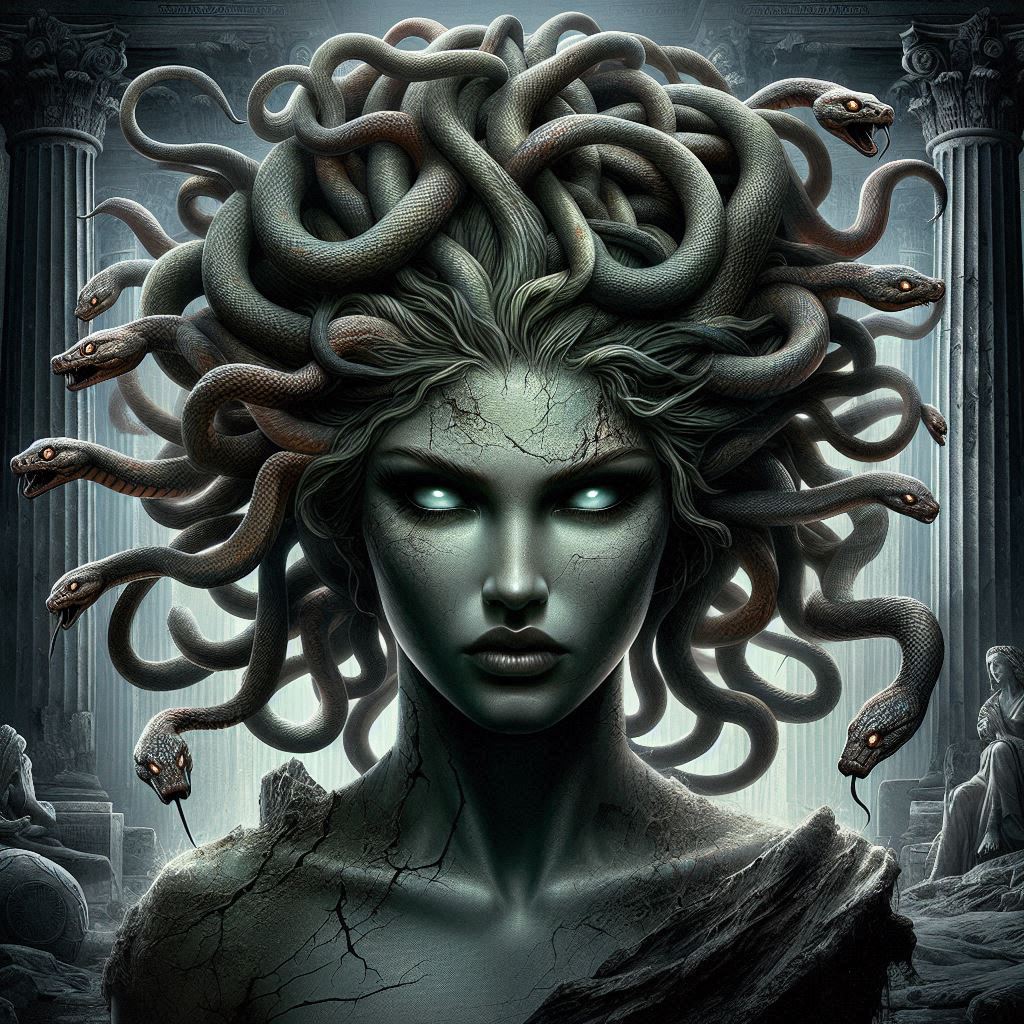
Medusa: The Story Behind the Gorgon and Her Lasting Influence
Karl FinnbogasonShare
Medusa is one of the most captivating figures in Greek mythology, embodying themes of power, beauty, vengeance, and tragedy.
Her image—a fearsome woman with a head full of writhing snakes—has become an enduring symbol in art, literature, fashion, and feminism. While often depicted as a monstrous villain, Medusa’s story is much more complex, revealing themes of injustice, transformation, and resilience.
In this article, we explore the origins of Medusa’s myth, her symbolic significance, and how she continues to influence modern culture.
The Origins of Medusa: From Beauty to Curse
The myth of Medusa originates in Greek mythology, where she is known as one of the three Gorgons. Unlike her immortal sisters, Stheno and Euryale, Medusa was born a mortal.
According to Ovid’s Metamorphoses, Medusa was once a beautiful maiden who served as a priestess in the temple of Athena, the goddess of wisdom and war. Her beauty was so extraordinary that she caught the attention of Poseidon, the god of the sea.
Depending on the version of the myth, Poseidon either seduced or assaulted Medusa within Athena’s sacred temple. Enraged by this act—whether out of wrath toward Poseidon or Medusa herself—Athena cursed Medusa, transforming her into a hideous monster with venomous snakes for hair. From that moment on, anyone who gazed into Medusa’s eyes would be turned to stone.
This version of the story casts Medusa not as a villain, but as a victim of divine injustice, a perspective that has gained renewed interest in modern feminist interpretations of the myth.
Medusa and Perseus: The Ultimate Confrontation
Medusa’s fate was sealed when she became the target of the hero Perseus, son of Zeus and Danaë. King Polydectes, who desired Perseus’ mother, sent the young hero on a seemingly impossible quest—to bring back Medusa’s head.
With divine assistance from Athena, Hermes, and Hades, Perseus was armed with:
- A mirrored shield (Aegis) – Provided by Athena to avoid direct eye contact with Medusa.
- A harpe sword – Given by Hermes to decapitate the Gorgon.
- Winged sandals – To approach stealthily and escape quickly.
- A magical bag (kibisis) – To safely carry Medusa’s head.
Using the mirrored shield to safely approach Medusa, Perseus beheaded her while she slept. From her severed neck, the winged horse Pegasus and the warrior Chrysaor were born, both fathered by Poseidon.
Perseus later used Medusa’s head as a weapon, petrifying enemies before gifting it to Athena, who placed it on her Aegis shield as a symbol of protection and power.
The Symbolism of Medusa
Medusa’s myth carries multiple layers of symbolism, evolving throughout history:
1. Protection and Power
In ancient Greece, Medusa’s head (or Gorgoneion) was used as a protective symbol. Warriors engraved it on shields, armor, and doorways to ward off evil.
- Athena’s Aegis shield – Medusa’s head became a symbol of divine power and fearlessness.
- Roman mosaics – Homes featured Medusa’s face at entrances to protect against malevolent forces.
2. Feminine Rage and Vengeance
Medusa has become an emblem of female empowerment and resistance, representing the rage of women who have suffered injustice.
- Feminist movements have reclaimed Medusa as a symbol of strength and defiance.
- Survivors of trauma see Medusa’s transformation as a metaphor for reclaiming power after suffering.
3. Beauty, Transformation, and Fear
Medusa’s story embodies the duality of beauty and horror. Her transformation from admired maiden to feared monster mirrors society’s tendency to demonize women who refuse to conform.
Medusa’s Influence in Modern Culture
Medusa’s legacy has left a lasting mark on various aspects of culture, from art and fashion to movies and literature.
1. Art and Sculpture
- Caravaggio’s Medusa (1597) – A famous depiction of Medusa’s severed head, capturing terror and movement.
- The Perseus with the Head of Medusa statue (1545-1554) by Benvenuto Cellini – One of the most well-known Renaissance sculptures.
- Luciano Garbati’s Medusa with the Head of Perseus (2008) – A modern feminist reinterpretation, flipping the original myth by portraying Medusa victorious.
2. Literature and Film
- Movies: Medusa has been featured in various films, including Clash of the Titans (1981 & 2010), Percy Jackson & The Olympians, and Wonder Woman.
- Books: Medusa appears in contemporary novels like Circe by Madeline Miller and The Gorgon’s Head by Nathaniel Hawthorne.
3. Fashion and Branding
Medusa’s face has become a symbol of luxury and power in fashion.
- Versace’s logo – The fashion house chose Medusa’s head as its emblem, representing allure, dominance, and timeless beauty.
- Runway designs – Many designers incorporate snake-like patterns, dark aesthetics, and Greco-Roman motifs inspired by Medusa.
4. Tattoos and Jewelry
Many people wear Medusa tattoos and jewelry to symbolize:
- Protection against harm.
- Female strength and transformation.
- Reclaiming power from past trauma.
The Modern Reinterpretation of Medusa
Today, Medusa is no longer seen purely as a villain but as a tragic figure and a symbol of empowerment. Many modern interpretations explore:
- The injustice of her curse – Was Medusa truly a monster, or a victim of divine punishment?
- Her gaze as a symbol of power – Instead of a weapon, some see Medusa’s gaze as a form of self-defense.
- Reversing the narrative – Feminist perspectives view Medusa as a force reclaiming control over her own story.
Medusa’s Timeless Impact
Medusa’s myth is one of the most enduring and multifaceted stories in Greek mythology. Whether as a terrifying Gorgon, a symbol of protection and power, or an icon of female resilience, Medusa’s legacy continues to evolve.
From ancient shields to high-fashion runways, her story remains relevant, reminding us that myths are not just tales of the past but reflections of our ever-changing society. Medusa’s image will continue to captivate, challenge, and inspire generations to come.
